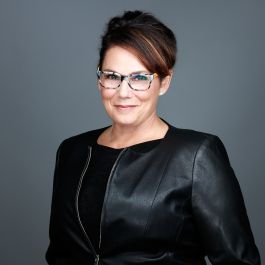Sales people talk at length about how closing deals is all about building relationships with prospects. The same goes for customer success managers when it comes to upselling clients and renewing contracts. So, if both sales and customer success value relationship-building so much, why does the relationship between these two departments often become strained as a company scales?
The short answer is that as teams grow, they tend to focus inward and become more concerned with their internal processes and communication practices. This naturally makes it more difficult to prioritize cross-team collaboration, especially on fast-growing teams where leaders are hyper-focused on bringing in new talent and hitting increasingly lofty goals. This intense inward focus unwittingly causes sales and customer success to start working out of silos, which can be hard to notice, especially if the hand-off process between sales and customer success is still running smoothly and teams are hitting their individual goals and revenue targets.
So, what does collaboration look like at scale and what tangible impact does it make on sales and customer success? To answer those questions, we turned to five Boston customer success leaders who have decades of experience building and maintaining bonds with sales teams.
When departments are small, it’s fairly easy to understand what everyone’s role on a team is and what their responsibilities are. As departments grow, that becomes harder to keep track of, especially when teams have shared goals like revenue generation.
Bhargava, VP of global customer success at Immersive Labs, said that when it comes to getting growing sales and customer success professionals on the same page, she starts by highlighting an example of a successful partnership.
What are some strategies you’ve developed to create alignment between your customer success and sales teams?
The easiest way to ensure there is no friction is to ensure incentives are aligned. You strengthen the partnership when it is clear who is responsible for renewals and expansion. Hosting joint quarterly business reviews shows unity in account strategy and transparency for both teams. It’s also important to have a clear customer journey with a well-defined transition — I don’t like the word “hand off” as it implies that sales no longer has any responsibility — and regular strategy checkpoints along the way.
Have those who’ve been a part of successful sales and CSM partnership talk about what worked.”
Describe the challenges that can arise in this relationship as a company scales, and how your customer success and sales teams have been able to manage them.
The biggest challenge is ensuring everyone understands their roles and responsibilities. Without this clarity, a lot of friction and bad will can fester between the customer success and sales teams, which is not healthy for the company nor its customers. The moment I start to notice the “finger-pointing game,” I know we’ve taken a wrong turn somewhere.
It’s important to be able to recognize these friction points early and help reinforce the partnership message. Another approach that has worked for me in the past is to have those who’ve been a part of successful sales and CSM partnership stand up during kickoffs and talk about what worked and how they worked together to gain success. Nothing motivates an entire go-to-market team than hearing about others’ success!
When customer success and sales teams are aligned at scale, how does it affect the business overall?
Hands down, the biggest impact is on the NRR for the company! The best indicator of a functioning success and sales team is showing healthy growth in current accounts. We recently had a situation where a low NPS score prompted an account to be marked at risk. Quickly, the customer success manager was alerted and set up an internal call to strategize. The next day, sales leadership was on a call with the customer to understand the concerns and commit to a remediation plan. The customer ended up renewing and eventually became an advocate. Two key things made this possible.
First, automation allowed the CSM to react to the right trigger. This is the only way to survive as a company scales. Second, the prompt responsiveness and attentiveness displayed to the customer showed that we care. This led us to introduce a new award category, “Customer Duo Superstar,” which is awarded to the sales rep and CSM who turned around an at-risk customer. This demonstrates the partnership required to achieve such outcomes.
As teams grow, they tend to become more focused on processes. While processes ensure teams work in sync and in a scalable fashion, devotion to a process can cause friction when team members, or even whole teams, deviate from them. This can understandably cause conflict, which is why Lagares, VP of customer success at Nexthink, advises leaders to not be too protective of processes and, when they do break down, to question the process itself before pointing any fingers.
What are some strategies you’ve developed to create alignment between your customer success and sales teams?
In a client-obsessed organization, everyone is responsible for sales and customer success. Both teams need to be focused on the same objective. When teams understand each other’s value, it helps align the “whys” to how we engage and support each other. We must be equally committed to reaching those goals. Listening to challenges and contributing to solutions creates a sense of shared commitment.
Celebrating wins and including the teams that helped make them happen creates trust, respect and appreciation. Sharing responsibility for a loss also supports an environment of fairness and psychological safety. When teams aren’t competing for the spotlight, they’re competing for the customer instead. We win and lose together.
Lastly, it’s important to keep the “mama bear and papa bear” syndrome at bay. From more than 20 years of experience, I’ve learned that protecting a process or a team member is natural but can lead to division and breakdowns in communication. Reminding teams that the customer is the most important part of the equation can redirect energy to the desired outcome. A phrase I heard author Adam Grant use summarizes this beautifully: “Be focused on getting it right, not about being right.”
As a company scales, teams scale, and processes can more easily fall into the bucket of ‘the rules are made to be broken’ or even disregarded.”
Describe the challenges that can arise in this relationship as a company scales, and how your customer success and sales teams have been able to manage them.
As a company scales, teams scale, and processes can more easily fall into the bucket of “the rules are made to be broken” or even disregarded because an alternate way is easier. When this happens, no single person may be at fault. Before you engage in the “we have a process for that” mindset, I find that leveraging the best question in the customer success toolbox, the question of “why,” is valuable. Asking questions leads to important data that can bring clarity to the situation. The process may not have scaled with the business.
Another common challenge is one that’s not specific to sales and customer success — it can be applied to any two teams that rely on each other for mutual success. If the objectives of one team do not support — or worse, contradict — the objectives of other teams, it will be hard for either to achieve them without some injuries on the field. Aligning with sales leadership to understand their goals and share yours helps to identify concerns ahead of time and take the appropriate steps. Being transparent about the progress toward these goals from the top down and asking for help when needed means there are no surprises.
When customer success and sales teams are aligned at scale, how does it affect the business overall?
When aligned, these two teams make a winning combination. They can create star players that smash their targets, turn stakeholders into advocates, and learn from mistakes together and turn them into future strategies. Here’s what that can look like in practice.
When a sales rep is close to closing a deal and a new stakeholder presents concerns due to poor past experiences with a former provider, they bring in their success manager who walks through the methodology and what they can expect, working toward earning that coveted title of “trusted advocate.” They share pragmatic examples of what they do, take the mystery out of the process, the guesswork out of expectations and move one step closer to a signature.
Then there is reselling the client. Losing a customer stakeholder can impact the adoption and value realization for success and the upsell or cross-sell opportunity for sales. You may have to resell the value of your product. You need to find the new buyers and work together to find new sponsorship, ownership and advocacy, which can mean pulling in an executive sponsor and a sales consultant. Success has a portfolio to manage and sales and sales consultants have a quota to hit. Alignment enables you to strategize, rally and execute with precision.
Customer success is a relatively young field, and there’s plenty of room for companies to experiment and develop their own unique best practices. For example, in addition to seeking alignment between sales and CSMs through more traditional routes like integrating customer success and sales software and holding workshops, Dynatrace also decided to spin up a completely new team to support collaboration between the two departments.
White, VP of global customer experience, gave built in insight into the origins of “Dynatrace ONE” along with how its creation has impacted the company.
What are some strategies you’ve developed to create alignment between your customer success and sales teams?
We took our technical experts, product consultants and support engineers, and account management professionals, CSMs and renewal specialists, and brought them together in one team we call “Dynatrace ONE.” Think, “one team, one experience.”
Our CSMs and product consultants are partnered and assigned to specific accounts, and this partnership is bolstered by alignment to sales managers and regions, further breaking down silos between CSMs, consultants, support and sales. While the sales team still has sales targets, the Dynatrace ONE team is aligned around product adoption, “Dynatrace value” and developing meaningful relationships with customers.
Through our holistic “Recipe for Success” program — a continuous onboarding and value journey — our adoption, value and relationship objectives lead to growth. In fact, our CSMs have an incentive program where they get recognized and rewarded for developing leads for sales, even if they don’t eventually close. Finally, the accounts where we see the greatest growth and best successes are where we see intentional engagement between the sales manager and CSM.
Our CSMs are recognized and rewarded for developing leads for sales, even if they don’t eventually close.”
Describe the challenges that can arise in this relationship as a company scales, and how your customer success and sales teams have been able to manage them.
As a high-growth business in a high-growth market, our biggest challenge is hiring great talent and ensuring they’re all aligned. Our customer success and sales teams have grown tremendously year-over-year for the past three years. With so many new hires, onboarding and aligning expectations can be challenging. Every company does customer success differently, and our approach is unique, so we must work hard to keep everyone on the same page. We do this through quarterly business reviews, weekly “sales workshops” and regional management engagement. We also rolled out a new CS platform that integrates with our sales platform.
While our sales platform is great to track and manage sales opportunities, it’s not so great at managing our customer objectives, goals, progress and prescriptive tasks throughout the customer journey. Fortunately for us, our new CS platform does all those things, as well as integrating with the sales platform, creating two-way visibility into the activity of the CSM and Dynatrace ONE teams; the CSM gets visibility into new sales opportunities and sales get insights into our customer engagements.
When customer success and sales teams are aligned at scale, how does it affect the business overall?
Creating alignment between sales and customer success is a journey. Dynatrace is well underway on this journey, but with both teams growing as fast as they are, it remains a challenge to stay aligned and requires leadership to set the vision and example to get us fully there.
Recently, a sales manager successfully closed a small deal but knew if we delivered an amazing customer experience during the first six months it would open doors to more growth opportunities. However, due to being a smaller deal, allocating resources was a challenge. Because the sales manager and CS leadership had an established relationship, foundation of trust and shared successes, those resources were freely allocated.
As a result, the customer received the “premium” experience of Dynatrace ONE and three months later doubled their investment on a multi-year agreement, citing their customer experience as a key reason for this. This relationship was crucial in making that happen and just as creating alignment takes time, so does building a trusting relationship. But once it’s nailed, growth and success become inevitable.
Understanding the tangible impact culture has on the way teams work can be difficult. At LeanIX, Trudell, head of customer success management, has worked to instill a culture of collaboration between sales and customer success to ensure that the two teams stay aligned as the company grows. What does that look like in practice, though? Trudell shared a few examples of what this commitment to collaboration impacts the way the sales and CSM teams work together, along with how it led to an at-risk account becoming an upsell opportunity.
What are some strategies you’ve developed to create alignment between your customer success and sales teams?
First, we wanted to foster a culture of collaboration between the teams. In order to do this, we have implemented a number of initiatives to deliver value and identify upsell opportunities. Our CSMs invite the AEs onto regular customer calls, which gives AEs a clear picture of customer use cases, stakeholders and account potential. We then have full-team workshops to review CSMs’ books of business and identify where there might be upsell or cross-sell opportunities.
We also want to be aligned in our sales methodologies and have CSMs and AEs speaking the same language. Our enablement team does a fantastic job of facilitating training sessions so that our communication is precise. Monthly check in calls with CSMs and AEs who are working on upsells together to discuss next steps and strategy has created alignment between teams. These check-ins provide both sides with clear expectations and action items to be tracked.
We want both teams to have clear rules of engagement.”
Describe the challenges that can arise in this relationship as a company scales, and how your customer success and sales teams have been able to manage them.
The toughest challenge as a growing company in maintaining this relationship is changing processes. Making sure that these changes are well socialized and understood by both teams can be difficult. If a process is not understood, this will cause friction in the relationship. We want both teams to have clear rules of engagement and know what tasks are assigned to CSMs and AEs.
When customer success and sales teams are aligned at scale, how does it affect the business overall?
What we have seen over the last few quarters is an increase in upsell pipeline as a result of our workshops and monthly check-in meetings. We now have a much more accurate forecast for upsells with close plans and next steps. With this alignment, the teams can provide a complete picture of customer potential and future ARR growth.
Recently, we were having some difficulty communicating with a customer and considered them a potential churn risk. We were able to schedule a meeting with them to discuss some upcoming product releases. The team uncovered that they were a perfect fit for our new product and we were able to provide a demo on the spot for the customer. This was only possible with both the CSM and AE on the call together. We were able to turn a churn risk into an upsell and re-engage with the customer.
When it comes to making sure sales and customer success are working toward a common goal, Abram, SVP of sales, customer success and business operations at Jobcase, believes that communication and empathy are key. These aren’t exactly strategies themselves, but they do underpin his wealth of practical advice for leaders who are struggling to get these two teams back on the same page and working together again.
What are some strategies you’ve developed to create alignment between your customer success and sales teams?
First, strategy: Make sure there is a single, shared strategy. Next, clarity: The roles of sales and customer success teams can vary greatly by industry, company and sometimes even sales channels, so be clear about what is expected. Then there’s context: Big decisions and big asks deserve more than just a directive from above. Team’s unify around each other and behind leaders when they understand not just what they’re doing but why.
Finally, don’t forget compensation. Given our unique ability to directly affect the revenue of the company, it is incredibly important to get compensation plans aligned with the strategy to ensure it’s the “right revenue.” One last note: The amount of time I suggest investing should be proportional to the size and complexity of your business. What seems silly with a team of three becomes imperative at 15!
Customers see results but also feel the warmth of being supported by a team that is in sync with them.”
Describe the challenges that can arise in this relationship as a company scales, and how your customer success and sales teams have been able to manage them.
With high-growth comes rapid change, which can lead to stress and confusion. No process is perfect and the best plans end up being 70 percent accurate. So prepare your team to avoid an “us and them” scenario” when things go off script. You can do this by providing context for the difficulties faced by different roles and increasing empathy.
Instill a culture that assumes the best intentions of others. This quickly turns anger into dialogue. Building cross-team relationships also helps. Technology and remote work have reduced personal interactions, but knowing your coworkers makes it easier to assume the best, so push for those team-building events.
Don’t forget to keep the communication flowing! Set up regular sessions with team leaders to probe for areas generating friction, avoiding blame and instead seeking solutions. Don’t get hung up on the original plan when data or the team is telling you it’s not working. Never forget to use a safety net, either. Empower teams to independently come up with their own solution but have a well-known escalation path when they can’t. Empowerment without a safety net can be an intimidating and costly when millions of dollars are at stake.
When customer success and sales teams are aligned at scale, how does it affect the business overall?
Alignment resonates throughout the organization. Working as a team, sales and customer success can drive more value, client satisfaction and grow our business. Customers see results but also feel the warmth of being supported by a team that is in sync with them. In addition, there are other “halo” effects that compound over time.
With customer intelligence, the product is better informed and consistent with client needs and purchase expectations. Our brand benefits as customers share great experiences with each other. Forecasting and planning are more accurate with better expectations and the ability to deliver on them. Morale goes up and turnover goes down as teams collaborate rather than look to find fault with each other.
Recently, customer success, monitoring a large campaign, recognized an anomaly in a customer’s data. It wasn’t affecting our primary CS goals but alignment with sales and the customer made it impossible to ignore. We quickly made the customer aware and took the time to show them how we diagnosed the issue, which earned praise from them to our sales team, who then made sure to highlight how customer success had just made their job easier with an extremely pleased customer.

















